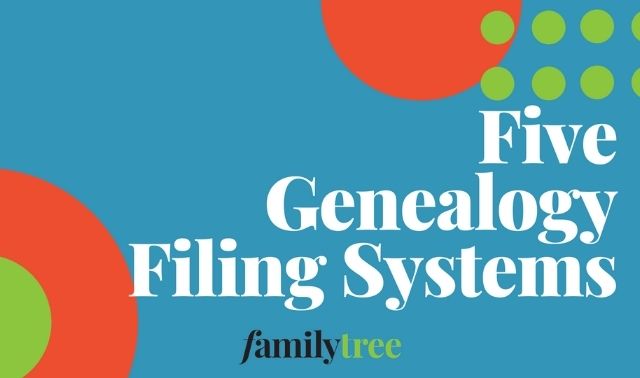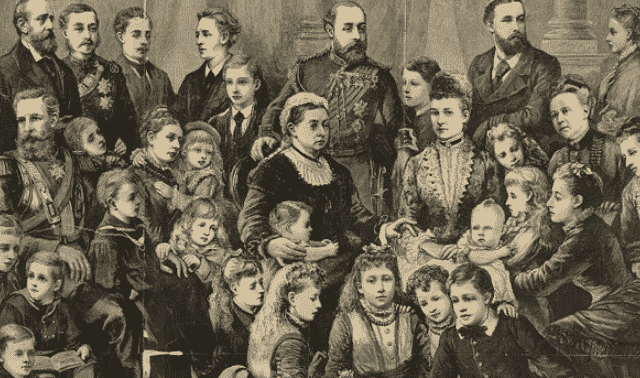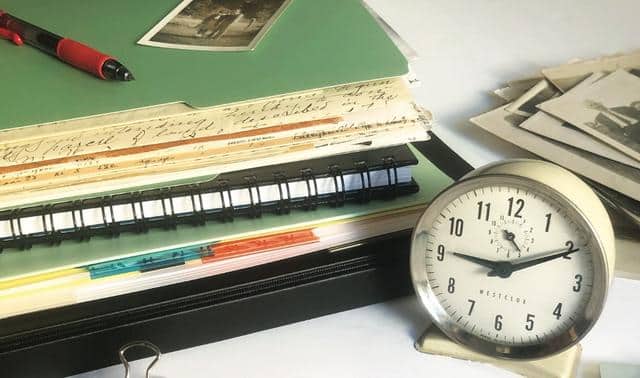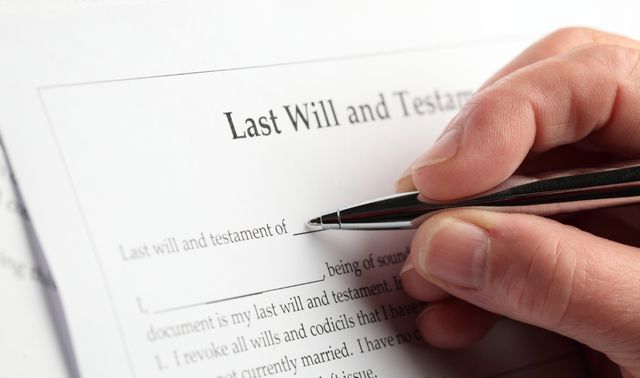Sign up for the Family Tree Newsletter Plus, you’ll receive our 10 Essential Genealogy Research Forms PDF as a special thank you!
Get Your Free Genealogy Forms
"*" indicates required fields
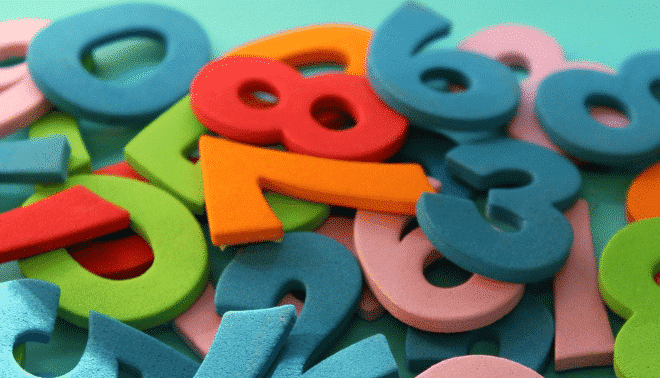
If you’re having trouble keeping track of all your ancestors, you might want to use a genealogical numbering system. Designed and modified by expert genealogists over decades and even centuries, these systems assign numbers to key family members in your research, making them easier to find and refer to as you build your family tree. Here’s a brief introduction to genealogical numbering systems, plus how to use the most common (such as Ahnentafel and the Register System).
Why Use Genealogical Numbering Systems?
In our modern digital world, keeping track of our ancestors is relatively easy. Using desktop genealogy software, we can quickly produce lists of ancestors or descendants, search for people with particular names, or display clickable pedigree charts that allow us to move from one person to another. We can even take two people from different parts of our family tree, and a tool will instantly tell us how they are related to each other.
But the pre-computer genealogical world was completely different. Producing large family trees in a visual format demanded tedious work, and figuring out exactly how ancestors might be related to the researcher required large hand-drawn charts and lots of reading. It was especially tricky when multiple ancestors had the same name. And studying the descendants of an ancestor was even more laborious, requiring tracking thousands of individuals.
This was the information-management issue studied by some of the best late-19th- and early-20th–century genealogists. As these genealogists began to generate large written family histories or publish their research in the new genealogy journals of the day, they realized they needed some sort of system to number their direct ancestors or the descendants of a famous ancestor. Numbering could help distinguish two different people with the exact same name, identify which generation they fit into, and even specify the birth order of children within a family.
Even today, using our genealogy software, we still find it helpful to use some of these numbering systems in order to produce lists and reports, especially when sharing with others. I wouldn’t be surprised to find a few current genealogists still trying to design a better numbering system, or at least tinkering with existing systems in order to improve them.
Whether you’re one of those pioneering long-haulers or a beginner genealogist wanting to use an existing system, let’s take a deep dive together into the world of genealogical numbering systems. They can be divided into three types: ancestral, descendant, and combination.
Note: We’ll demonstrate each system using the genealogy of a famous pedigree, the royal family of the United Kingdom (with Queen Elizabeth II or her grandson William, Duke of Cambridge, as the root person). You can refer to a traditional family tree (descendancy) view of Elizabeth’s descendants here and more information about William’s here.
Ancestral Systems: The Ahnentafel System
Keeping track of direct ancestors in a numbering system is reasonably straightforward, so it should not be surprising that the earliest example of such a system can be found more than 400 years ago. Austrian historian Michaël Eytzinger published a genealogical work (Thesaurus Principum Hac Aetate In Europa Viventium) documenting royal European houses in 1590.
This Eytzinger Method, known in German as an Ahnentafel (in English, “ancestor table”), was picked up by two later genealogists: Jerónimo de Sosa and Stephan Kekulé von Stradonitz. Sosa, a Spanish Franciscan friar and genealogist, wrote about the method in 1676 in his work Noticia de la Gran Casa de los Marqueses de Villafranca. And von Stradonitz, a German lawyer and genealogist, popularized the Ahnentafel method in his 1898 work Ahnentafel-Atlas: Ahnentafeln zu 32 Ahnen der Regenten Europas und ihrer Gemahlinnen.
The Ahnentafel method is perhaps the most common genealogical numbering system. In fact, Family Tree Magazine‘s free five-generation ancestor chart has Ahnentafel numbers built in.
How does the Ahnentafel system work? The root person (say, the genealogist) is assigned the number 1. From there, the system doubles a person’s number to get the number for No. 1’s father and adds one to that number to get the number for their mother. So the root person’s father is 2 and their mother is 3. Their paternal grandfather is 4, their paternal grandmother is 5, their maternal grandfather is 6, and their maternal grandmother is 7. The system can be carried back as many generations as one has names, leaving out those numbers where the names are unknown.
Let’s see how this works in practice for Prince William, Prince of Wales, back to his great-grandparents:
1. Prince William, Prince of Wales
2. Charles III
3. Lady Diana Spencer
4. Prince Philip, Duke of Edinburgh
5. Elizabeth II of the United Kingdom
6. John Spencer, 8th Earl Spencer
7. The Honourable Frances Roche
8. Prince Andrew of Greece and Denmark
9. Princess Alice of Battenberg
10. George VI of the United Kingdom
11. Elizabeth Bowes-Lyon, The Queen Mother
12. Albert Spencer, 7th Earl Spencer
13. Lady Cynthia Hamilton
14. Maurice Roche, 4th Baron Fermoy
15. Ruth Sylvia Gill
Knowing the person’s number can instantly provide us with certain kinds of information. For instance, the parents are 2 through 3, the grandparents are 4 through 7, the great-grandparents are 8 through 15, and so forth. This allows us to figure out how many generations back an individual is by seeing which range the person’s number falls into. From a mathematical perspective, paternal lines are simple powers of two: 2, 4, 8, 16, etc. Maternal lines are one less than powers of two: 3, 7, 15, 31, etc.
However, even a simple system like the Ahnentafel method can run into some snags. If we were to continue the numbers for Prince William’s ancestors, we would eventually reach the royal couple Christian IX, King of Denmark, and Princess Louise of Hesse-Kassel. They are numbers 32 and 33, as they are the great-grandparents of number 4, Prince Philip. But they are also numbers 82 and 83, as they are the great-great-grandparents of Elizabeth II. In fact, Queen Victoria is both 79 and 81! (Elizabeth II and Prince Philip, both great-great-grandchildren of Queen Victoria, were third cousins.)
Welcome to pedigree collapse! In any culture that does not forbid the marriage of known relatives, you are likely going to witness this phenomenon. Sooner or later, as you trace your direct ancestors back through the generations, the same individual or couple will appear in different parts of your family tree.
This means that they would be given more than one Ahnentafel number to represent them. The usual solution (if you’re doing it by hand) is to mark the higher number with an indication that it duplicates a lower number.
Another drawback: Should new genealogical research change the knowledge of which person is the parent of a known ancestor, this would mean re-assigning numbers for those individuals and their ancestors going backwards. But genealogy software makes this easy to do.
The last problem that might be an issue with the Ahnentafel system is if you want to assign numbers to both biological ancestors and adopted ancestors. A common solution is to add an A (for “adopted”) and a B (for “biological” or “birth”) to the number, to indicate the nature of the relationship. So far as I’m aware, current genealogical software does not provide this feature, although it would be a handy one to have.
Also, in the case of an adoption by a same-sex couple, the usual procedure of assigning the even number to the male parent and the odd number to the female parent would need to be modified, perhaps by instead assigning the even number to the older parent and the odd number to the younger parent.
Descendant Systems
Designing a numbering system for descendants is much less straightforward than designing one for ancestors. The root person (that is, the famous ancestor or other person of interest) is still generally assigned the number 1. But there are several choices to be made about how to number his or her descendants.
We’ll discuss four systems in this section, but each of them has an obvious flaw: The discovery of a previously unknown child in a family (or an erroneous inclusion of a child) will mean that many numbers will have to be re-assigned. While genealogical software can easily do the re-numbering, this will invalidate at least part of the numbering of any previously published or otherwise shared reports.
The Register System
One key question to ask as you decide which system to use: Do you assign numbers for only those descendants who had offspring, or for all descendants regardless? The two most popular descendant-numbering systems have made this choice differently.
New England Historic Genealogical Society (NEHGS) (American Ancestors), founded in 1845, is the oldest genealogical society in the United States, and it’s published its quarterly journal, The New England Historical and Genealogical Register, for nearly as long. By 1870, the Register adopted a numbering system that assigned Arabic numbers to only those descendants who themselves produced children. Numbers are assigned by family group, in age order.
Let’s see how the Register System (in its most basic form) work for the descendants of Queen Elizabeth II:
1. Queen Elizabeth II
2. Charles III
3. Anne, Princess Royal
4. Andrew, Duke of York
5. Edward, Earl of Wessex
6. William, Prince of Wales
7. Harry, Duke of Sussex
8. Peter Phillips
9. Zara Tindall
10. Princess Eugenie of York
Note that numbers are assigned in family groups. So, for example, Charles’ children William and Harry have numbers 6 and 7 despite being younger than their cousins Peter and Zara (numbers 8 and 9). Because Charles is the eldest sibling, his children have the first numbers of that generation.
The NGSQ System (or Modified Register System)
Likewise, the National Genealogical Society (NGS) was founded in 1903 and in 1912 began publishing its journal, the National Genealogical Society Quarterly (NGSQ). That publication, too, developed its own descendant-numbering system, distinct from that of the NEHGS Register.
Although there are a number of differences between the NGSQ System (also known as the Record System or Modified Register System) and the Register System, the primary difference is that all descendants, regardless of whether they have children, are assigned their own Arabic number.
Like in the Register system, numbers are assigned by family group in birth order. Those who have descendants are marked with a plus sign in reports to signal that their descendants will appear in the next generation.
Here is how the numbering would look for the descendants of Queen Elizabeth II:
1. Queen Elizabeth II
2. Charles III
3. Anne, Princess Royal
4. Andrew, Duke of York
5. Edward, Earl of Wessex
6. William, Prince of Wales
7. Harry, Duke of Sussex
8. Peter Phillips
9. Zara Tindall
10. Princess Beatrice of York
11. Princess Eugenie of York
12. Lady Louise Windsor
13. James, Viscount Severn
14. Prince George of Cambridge
15. Princess Charlotte of Cambridge
16. Prince Louis of Cambridge
17. Archie Harrison Mountbatten-Windsor
18. Lilibet Diana Mountbatten-Windsor
19. Savannah Phillips
20. Isla Phillips
21. Mia Grace Tindall
22. Lena Elizabeth Tindall
23. Lucas Philip Tindall
24. August Brooksbank
Like in the Register System, the numbering by family group means that some descendants are listed before their same-generation cousins even if they were born after them.
As you can see, these two systems produce sequential numbers for descendants. But the numbers, by themselves, do not provide other information such as which generation the person falls into or what birth order each person would have in their own family. However, generation-numbering and birth-order numbering are part of the full stylings of both the Register and NGSQ Systems.
The Henry System
While the Register System and the NGSQ System are the most popular descendancy-numbering systems in use, two others are worth mentioning because you’ll find them as additional report options in such desktop genealogy software as Family Tree Maker and RootsMagic.
The first is the Henry System, designed by Reginald Buchanan Henry and used in his 1935 work Genealogies of the Families of the Presidents. Like the others we’ve discussed, it assigns 1 to the root person. But then it adds a digit for each generation, and the value of that digit is the birth order in their family.
This is what it would look like for the descendants of Queen Elizabeth II:
1. Queen Elizabeth II
11. Charles III
111. William, Prince of Wales
1111. Prince George of Wales
1112. Princess Charlotte of Wales
1113. Prince Louis of Wales
112. Harry, Duke of Sussex
1121. Archie Harrison Mountbatten-Windsor
1122. Lilibet Diana Mountbatten-Windsor
12. Anne, Princess Royal
121. Peter Phillips
1211. Savannah Phillips
1212. Isla Phillips
(and so on)
This system can also accommodate the root person’s siblings. In the above arrangement, Elizabeth II’s younger sister, Princess Margaret, would be number 2, and Margaret’s children David and Sarah would be 21 and 22 respectively.
It might occur to you that the Henry System would run into some problems, including in the case of families with more than nine children. But the system has an answer: The 10th child is marked with an X, while additional children are marked A, B, C, and so forth. In some variations (such as the Modified Henry System), the 10th and later children have their birth orders put into parentheses.
The d’Aboville System
Although the d’Aboville System is attributed to Count Jacques d’Aboville in 1940, one can find an example of essentially the same system being used as early as 1915 by the Huntington Family Association in its publications. The primary difference between the Henry and d’Aboville Systems is that the generation digits are separated by periods, so that 11 in the Henry System is 1.1 in the d’Aboville System. This solves the problem of birth order numbers larger than nine.
So the descendants of Queen Elizabeth II would be numbered:
1. Queen Elizabeth II
1.1. Charles III
1.1.1. William, Prince of Wales
1.1.1.1. Prince George of Wales
1.1.1.2. Princess Charlotte of Wales
1.1.1.3. Prince Louis of Wales
1.1.2. Harry, Duke of Sussex
1.1.2.1. Archie Harrison Mountbatten-Windsor
1.1.2.2. Lilibet Diana Mountbatten-Windsor
1.2. Anne, Princess Royal
1.2.1. Peter Phillips
1.2.1.1. Savannah Phillips
1.2.1.2. Isla Phillips
(and so on)
Other Systems and Common Errors
Is it possible to create a system that will assign a number to all of your direct ancestors, as well as all of their descendants? Yes, such as by combining the Ahnentafel system with one of the descendancy systems.
For instance, you could combine Ahnentafel numbering for ancestors with d’Aboville numbering for descendants. If the root person were Prince William (he would be assigned number 1), his father, Charles, would be 2. Then Prince Harry (William’s brother) could be 2.2 or 3.2, as the second child of No. 2 Charles and No. 3 Diana. (This solution is also a good workaround to documents half-siblings.)
But what about assigning numbers to the spouses of our non-ancestor relatives? Numbering systems don’t generally don’t include these individuals. Noted genealogist William Dollarhide has suggested adding an asterisk to the relative’s number to designate the spouse, and to add *1, *2, etc. in the case of multiple spouses. In other cases, you might simply add an S to a person’s number to generate a figure for the spouse.
As you might imagine, there are a few other numbering systems in the genealogical world. All systems are going to have their pluses and minuses, and it’s doubtful that a perfect system will ever be designed. Fortunately, current genealogy software automatically handles all the numbering for us, and we can switch between the popular systems as often as we like as we produce reports.
If you’d like to know a bit more about the details of these systems and about how to handle unique situations, you’ll enjoy reading Numbering Your Genealogy: Basic Systems, Complex Families, and International Kin, by Joan Ferris Curran, Madilyn Coen Crane, and John H. Wray (National Genealogical Society), published in 2008.
A version of this article appeared in the May/June 2021 issue of Family Tree Magazine. Last updated in September 2022 to reflect the death of Queen Elizabeth II and a change to Prince William’s title.
Related Reads
ADVERTISEMENT




